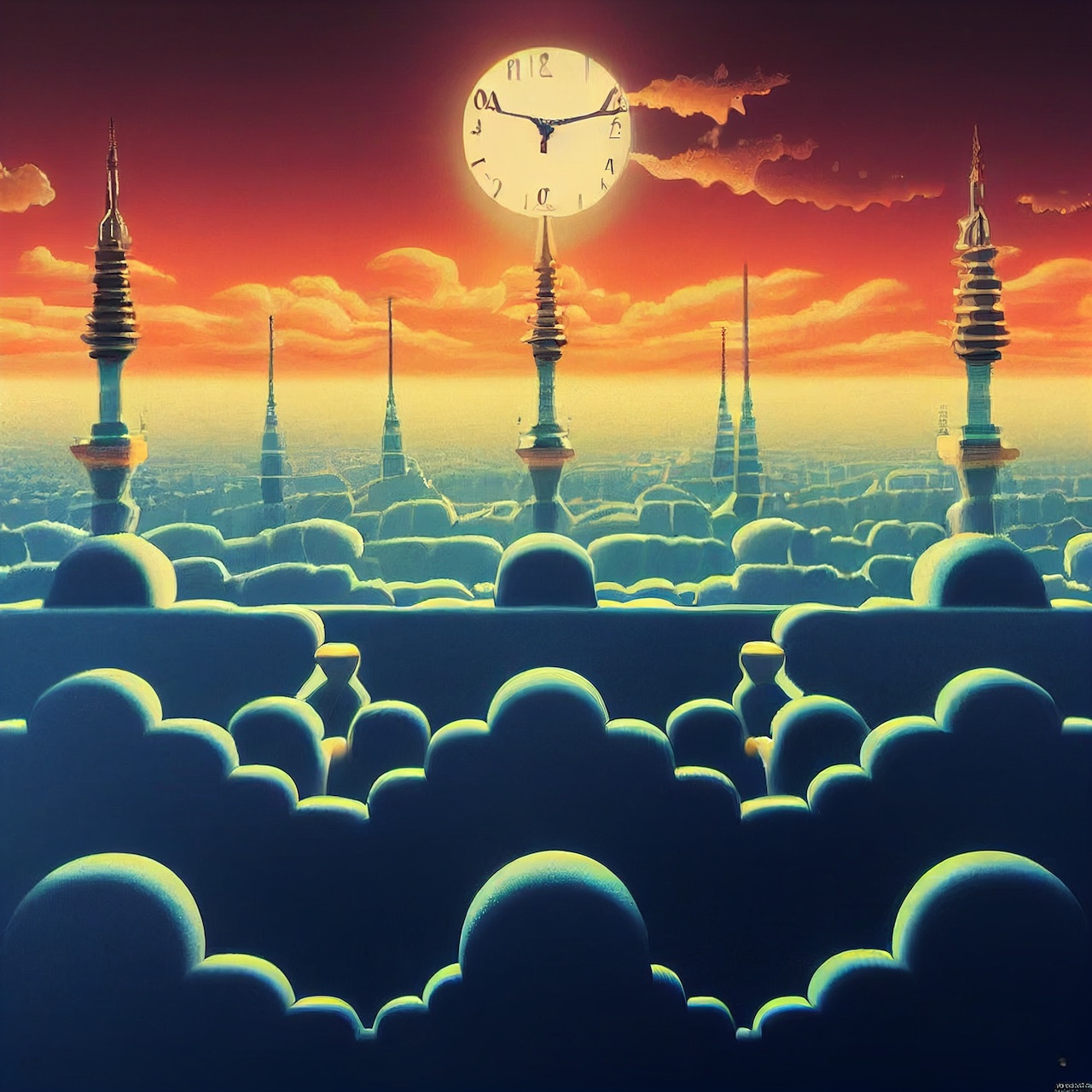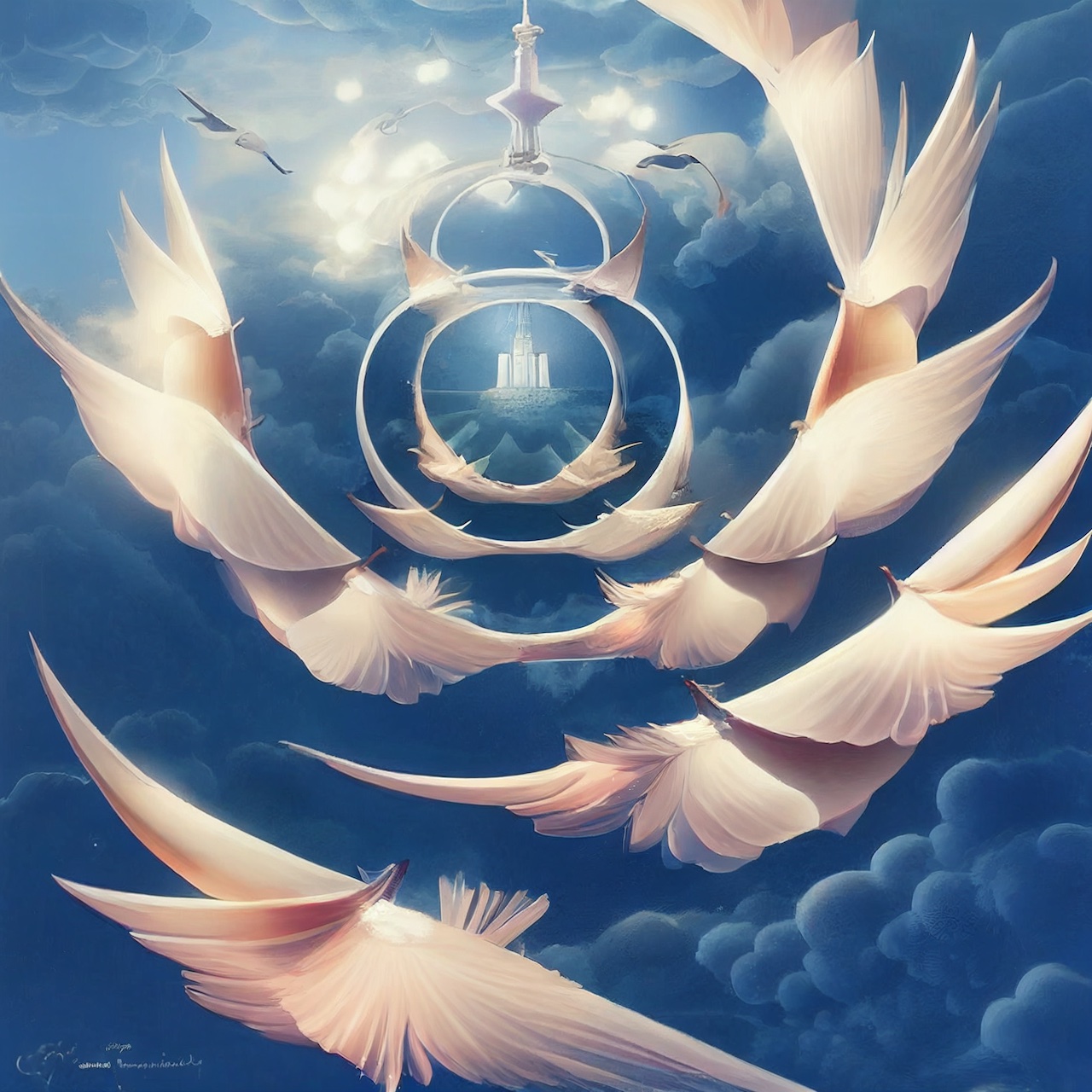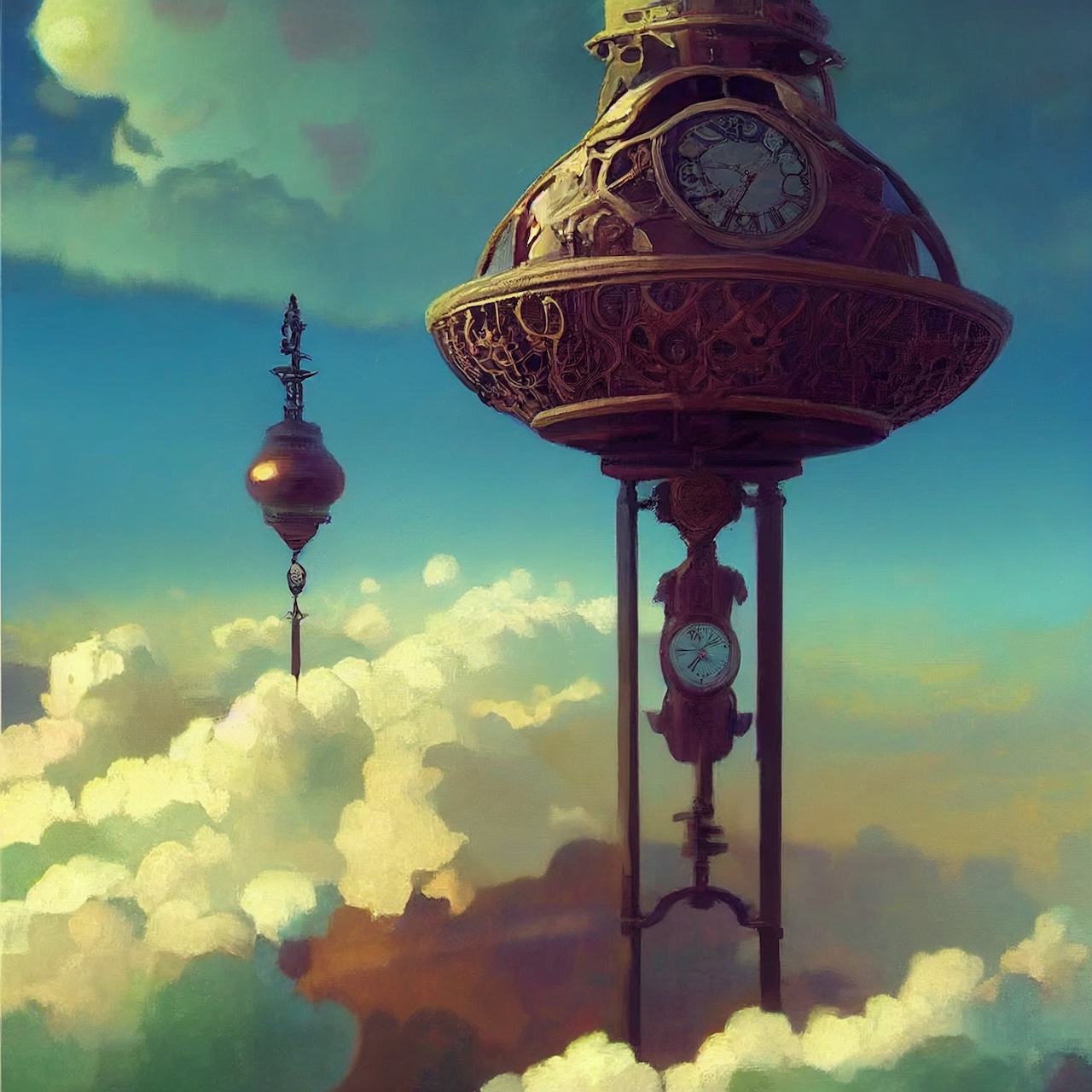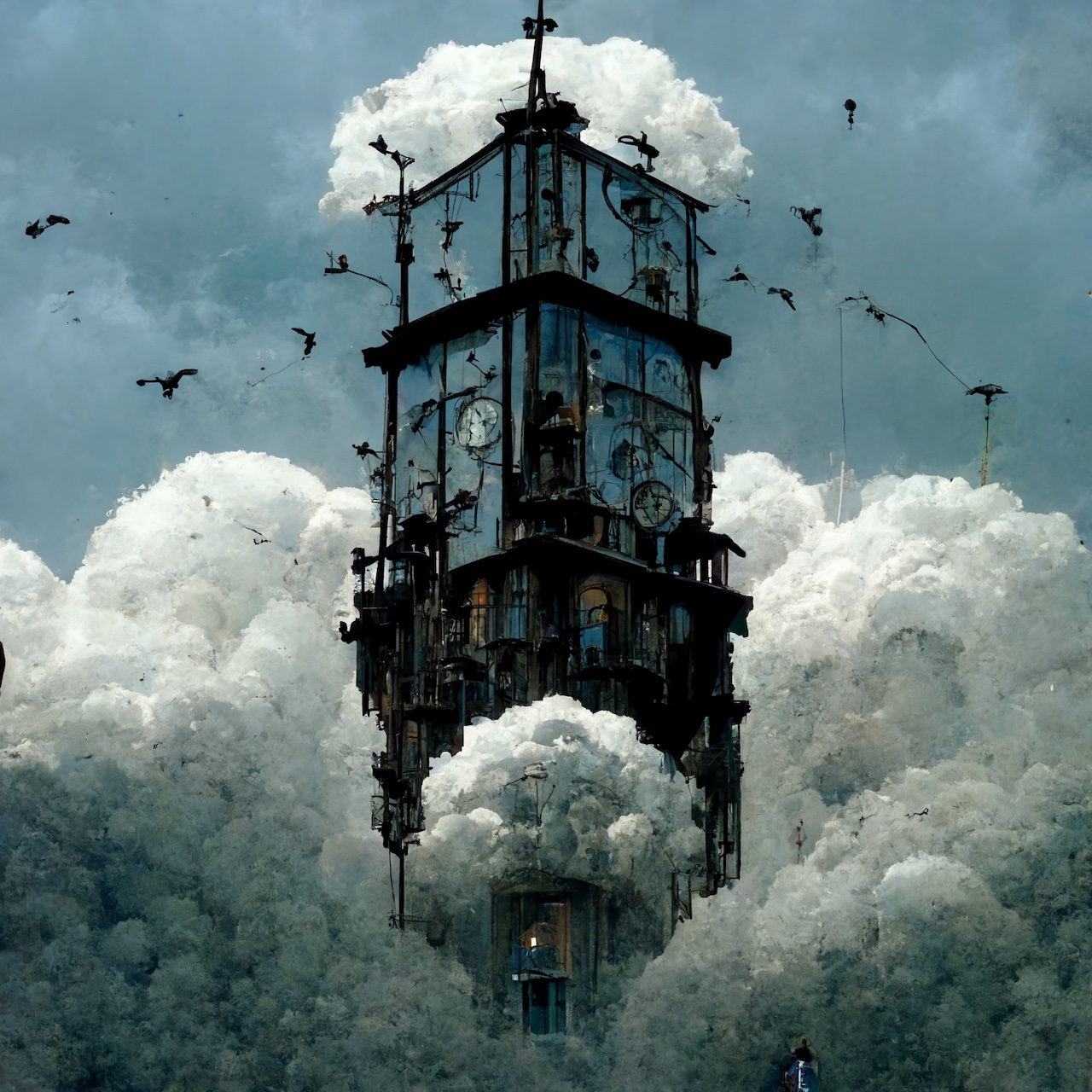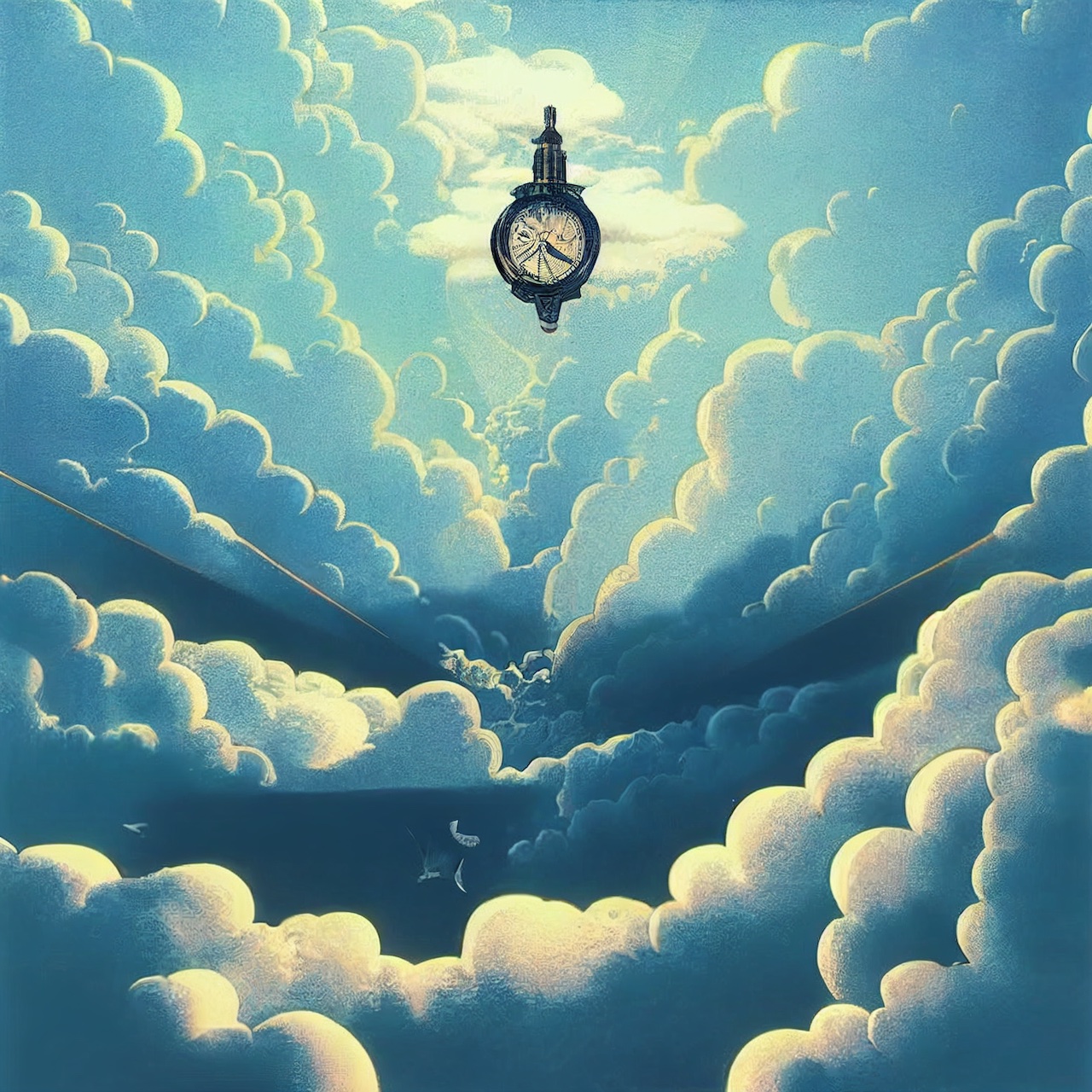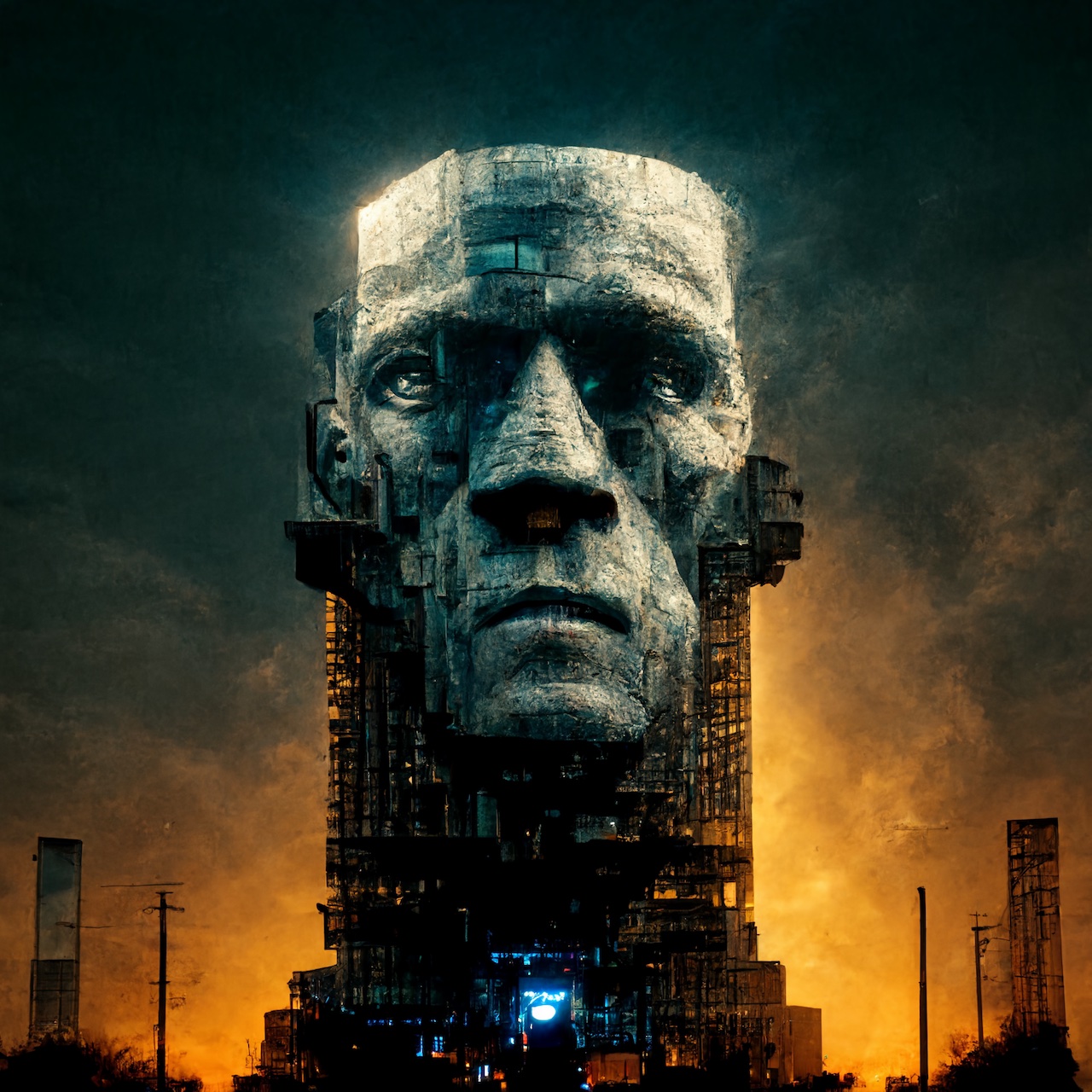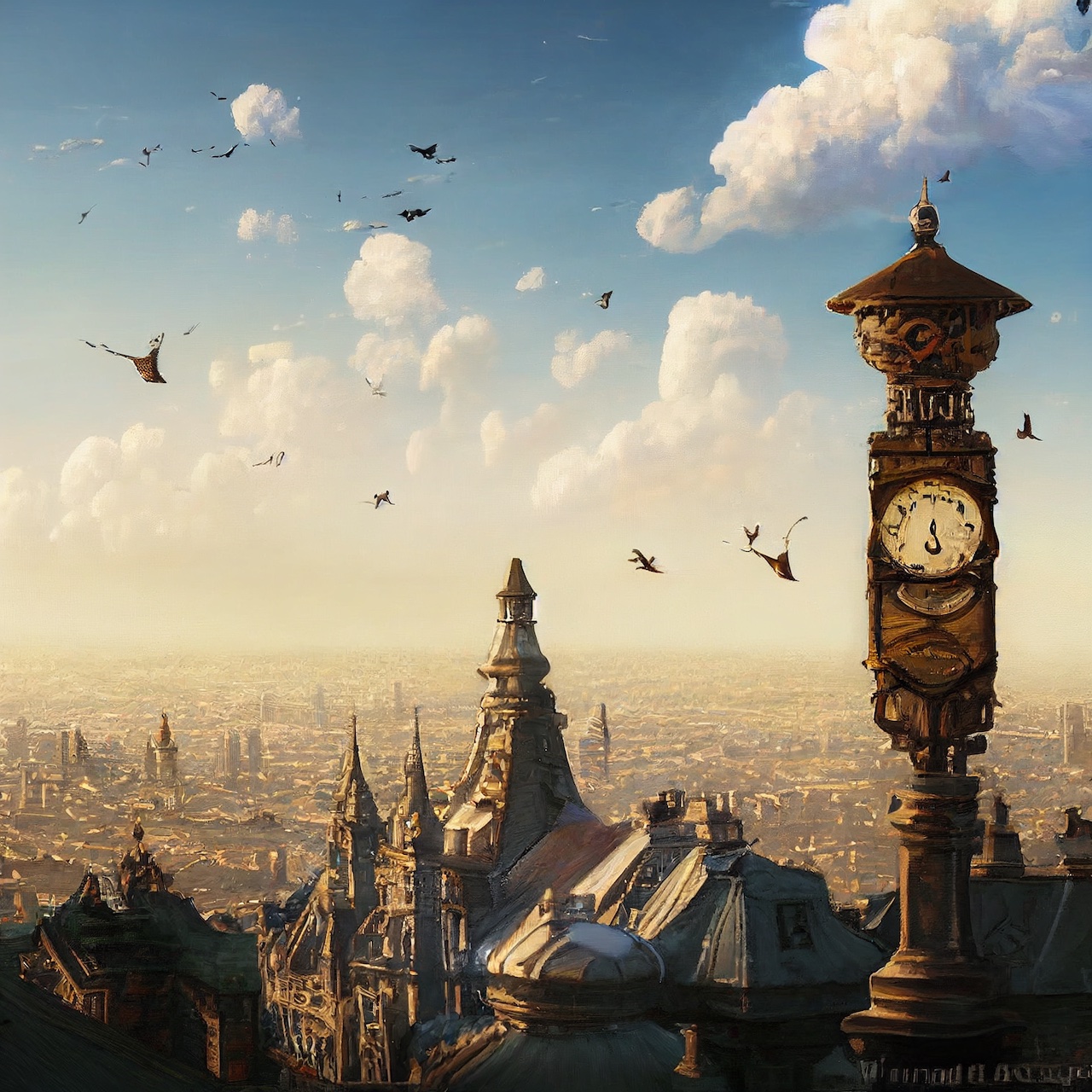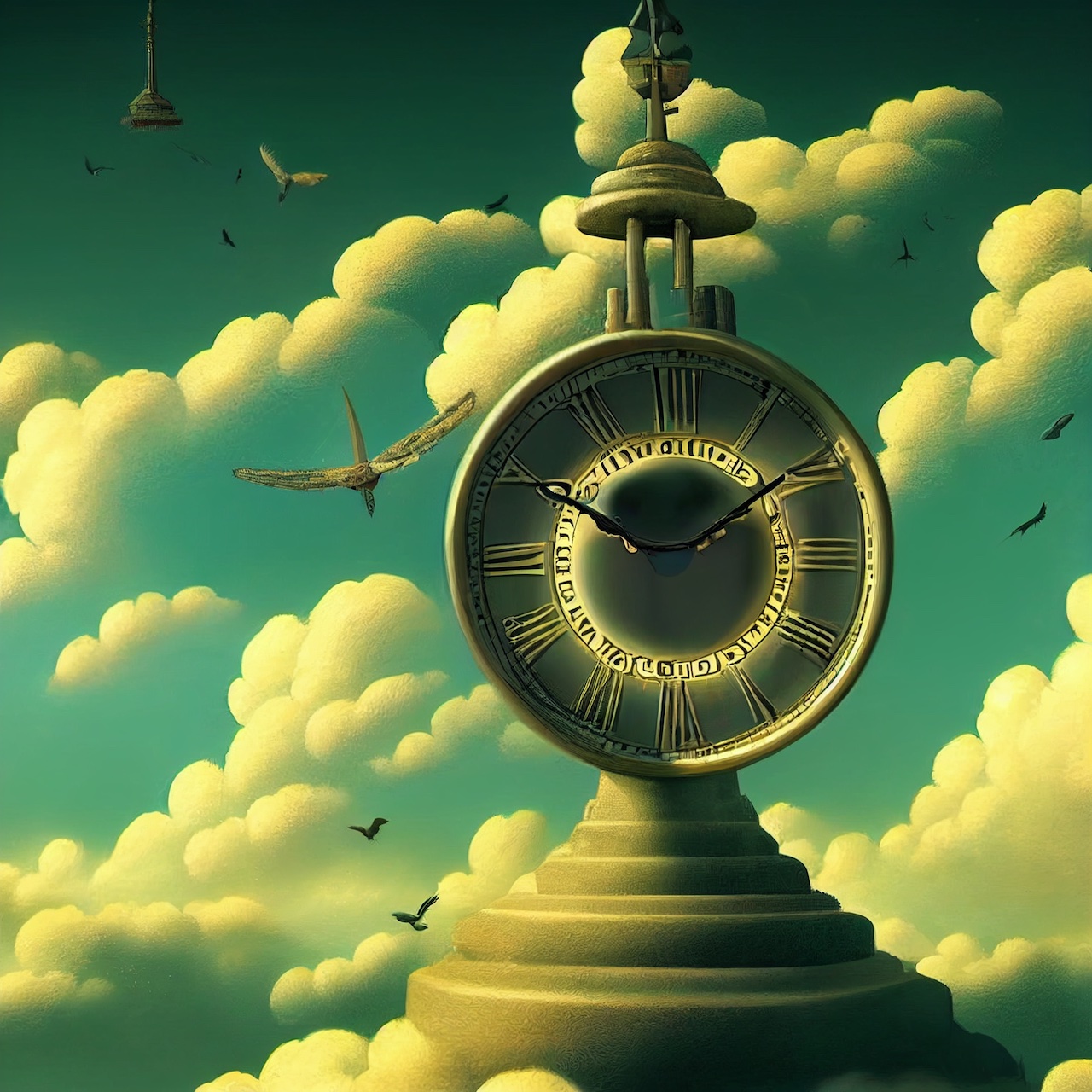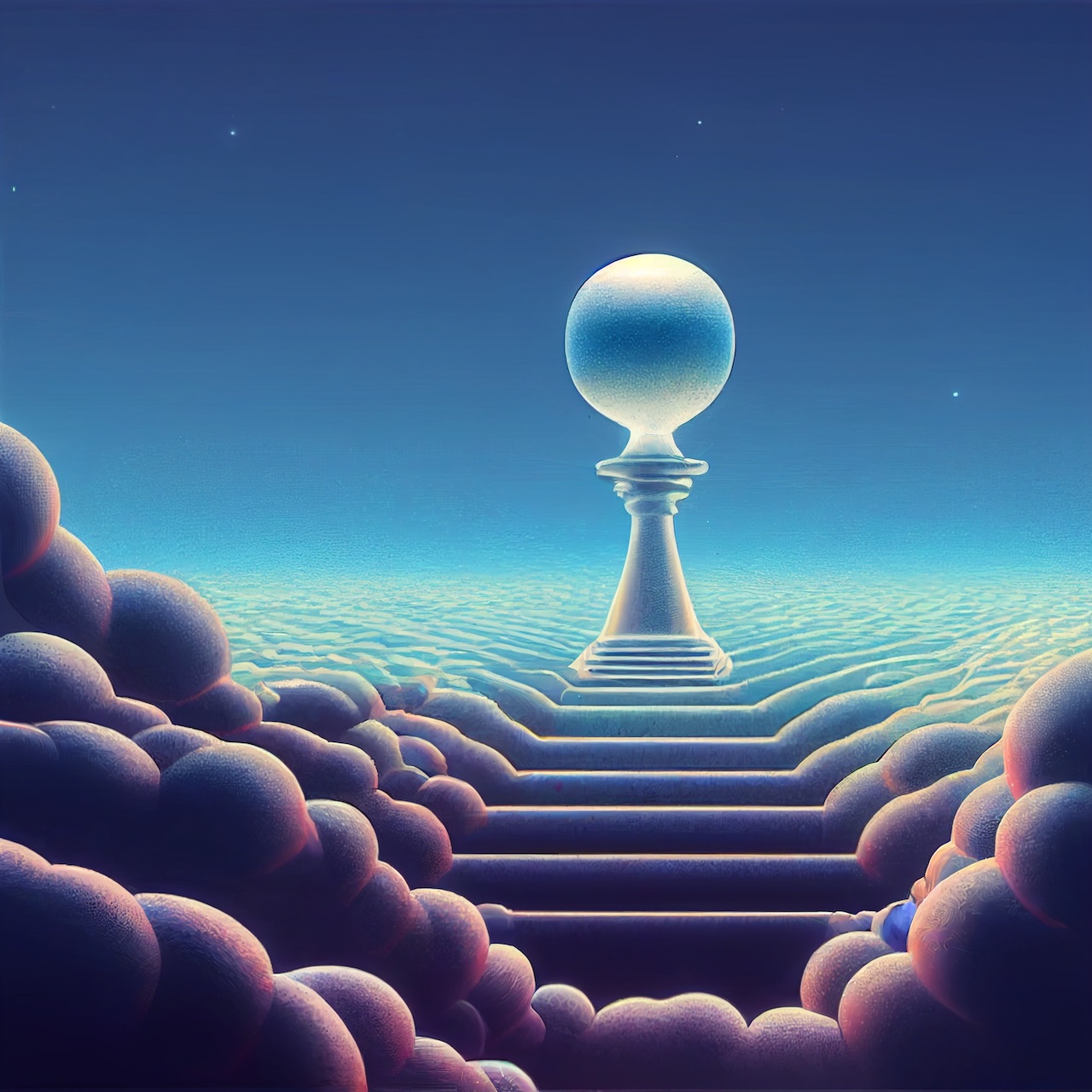for Orchestra (2021-23, rev. 2024)
Timestory, Book II
오케스트라를 위한, “시간과 탑들 너머로 (해리슨 버트휘슬경을 추모하며)”
시간이야기, 제 2권


(In memoriam Sir Harrison Birtwistle)
[Timestory, Book II]
1. Left wing: Strange Fields and Hills and Faces
Right wing: The Philemon and Moving Towers
2. Winged forms flying against the fading air over the
오케스트라를 위한, “시간과 탑들 너머로 (해리슨 버트휘슬 경을 추모하며)"
시간이야기, 제 2권
1. 좌현: 신령스런 장과 언덕과 거대한 얼굴들
우현: 현자 와 움직이는 탑
2. 희박한 대기 너머로 날개 형태가 날아오르면
Duration of the two movements: ca. 20 minutes
Program notes
It took almost four months for me write the first page of this piece. However, as abandoned sketches and discarded scores piled up one by one, it became a form of dream journal which recorded my imagination. During this time, I tried to build a tower of lights (or three towers of different colors, which I named red, purple, and yellow), with infinite time-wave trains expressed by string glissandi and La Mer-like string figures, freely flying birds of woodwinds, a gigantic cosmic machine which represents the perpetual cyclical movements of the celestial sphere. In my reveries, these visual or aural images were synthesized with the images that I found from Joyce’s A Portrait of the Artist as a Young Man, which I loved because of its infinitely positive and vibrant tones expression, to me a much more personal and honest version of Nietzsche’s Zarathustra.
Later many of these images were analyzed and rebuilt with small chronons of time, which became the horological timepieces-gears, springs, and jacquemarts (bell-strikers/automatons) for me to build this modular architecture. The first movement mostly follows the aforementioned imaginary narrative, built with multiple blocks/episodes of musical sceneries, beginning from the introduction of timepieces, followed by the exposition of time-sea (emerging from the C overtone series symmetrically disposed with the high B undertone series), after which mountainous face-machines are built/introduced one by one. After passing the shimmering hills which are made with the time-sea material, a new time tower is introduced, and then it is transformed into a variety of different tower-forms, sometimes surrounded by a fierce flock of flying forms (could be either firebirds, or an oriental dragon/phoenix.) In the second movement, the birds get “enlightenment,” and are freed from the shackles of the central tempi–conductor, which I dreamed from my earlier years but could not realize (the emancipation of time, which I am still trying to accomplish.) Later in the movement, they soar to embark on a great journey toward eternity or transcendence. The movement titles are from Joyce’s book, combined with some other words from Deleuze and Jung.
Sir Harrison Birtwistle’s music has been the guiding star of my musical journey. While writing this piece, I studied his Second Piano Concerto (Responses: Sweet Disorder and the Carefully Careless) and Harrison’s Clock, and read books about and by him, including Wild Tracks (which is a record of interviews with Maddocks during the time that Birtwistle was writing this piano concerto), Harrison Birtwistle Studies, and Harrison Britwistle’s Operas and Music Theatre by Beard. His online interviews and conversations gave me insights especially on constructing musical forms, which has been my foremost tasks and considerations over the past five years. For example, his idea of ever-presenting expositions with an emphasis on detail and context, which eventually creates the formal arc, guided me to conclude one of my solutions on musical forms.
While writing this piece and right after finishing reading his interview book, the news of his death reached me. I immediately decided to dedicate Over the Towers and Hours to the memory of this great composer, who was truly a towering figure of the music of the twentieth century, and whose music always explored capturing and expressing the essence of time in innovative and ingenious ways.

Over the Towers and Hours, original handwritten score
Quotations, from A Portrait of the Artist as a Young Man
1st movement‐Left Wing
m. 1: “He saw the sea of waves, long dark waves rising and falling, dark under the moonless night.”
m. 25: “Creatures were in the field: one, three, six: creatures were moving in the field, hither and thither. Goatish creatures with human faces,”
m. 34: “Mulrennan spoke to him about universe and stars. Old man said: Ah, there must be terrible queer creatures at the latter and of the world.”
m. 61: “A wild angel had appeared to him, the angel of mortal youth and beauty, an envoy from the fair courts of life, to throw open before him in an instant of ecstasy the gates of all the ways of error and glory.”
m. 74: “Depart from me, ye cursed, into everlasting fire which was prepared for the devil and his angels!”
m. 99: “Hell has enlarged its soul and opened its mouth without any limits.”
m. 111: Colossal Dance: “Strange figures advance as from a cave. Their faces are phosphorescent, with darker streaks. They begin [dancing.]”
m. 131: “The earth was like a swinging swaying censer, a ball of incense, an ellipsoidal fall.”
1st movement‐Right Wing
m. 158: “Evening would deepen above the sea, night fall upon the plains, dawn glimmer before the wanderer and show him strange fields and hills and faces.”
m. 178: “The water of the rivulet was dark with endless drift and mirrored the high‐drifting clouds.”
m. 194: “Again! Again! Again! A voice from beyond the world was calling, piercing like a star the dusk of silence.”
m. 201: “So timeless seemed the grey warm air, so fluid and impersonal his own mood, that all ages were as one to him. Now, at the name of the fabulous artificer, he seemed to hear the noise of dim waves and to see a winged form flying above the waves and slowly climbing the air. Was it a quaint device opening a page of some medieval book of prophecies and symbols, a hawk‐like man flying sunward above the sea, a symbol of the artist forging anew in his workshop out of the sluggish matter of the earth a new soaring impalpable imperishable being?”
m. 224: “His soul was soaring in an air beyond the world and the body he knew was purified in a breath and delivered of incertitude and made radiant and commingled with the element of the spirit.”
m. 278: “Yes! Yes! Yes! He would create proudly out of the freedom and power of his soul, as the great artificer whose name he bore, a living thing, new and soaring and beautiful, impalpable, imperishable.”
m. 319: “His cheeks were aflame; his body was aglow; his limbs were trembling. On and on and on and on he strode, far out over the sands, singing wildly to the sea, crying to greet the advent of the life that had cried to him.”
m. 367: “This was the call of life to his soul[!]
2nd movement
m. 1: “If her life were a simple rosary of hours, her life simple and strange as a bird's life, gay in the morning, restless all day, tired at sundown? Her heart simple and wilful as a bird's heart?”
m. 39: “That rose and ardent light was her strange wilful heart, strange that no man had known or would know, wilful from before the beginning of the world;”
m. 103: “lapping and flowing back and ever shaking the white bells of their waves in mute chime and mute peal, and soft low swooning cry”
m. 131: “They were flying high and low but ever round and round in straight and curving lines and ever flying from left to right, circling about a temple of air.”
m. 162: “The soft peace of silent spaces of fading tenuous sky above the waters, of oceanic silence, of swallows flying through the sea‐dusk over the flowing waters.”

